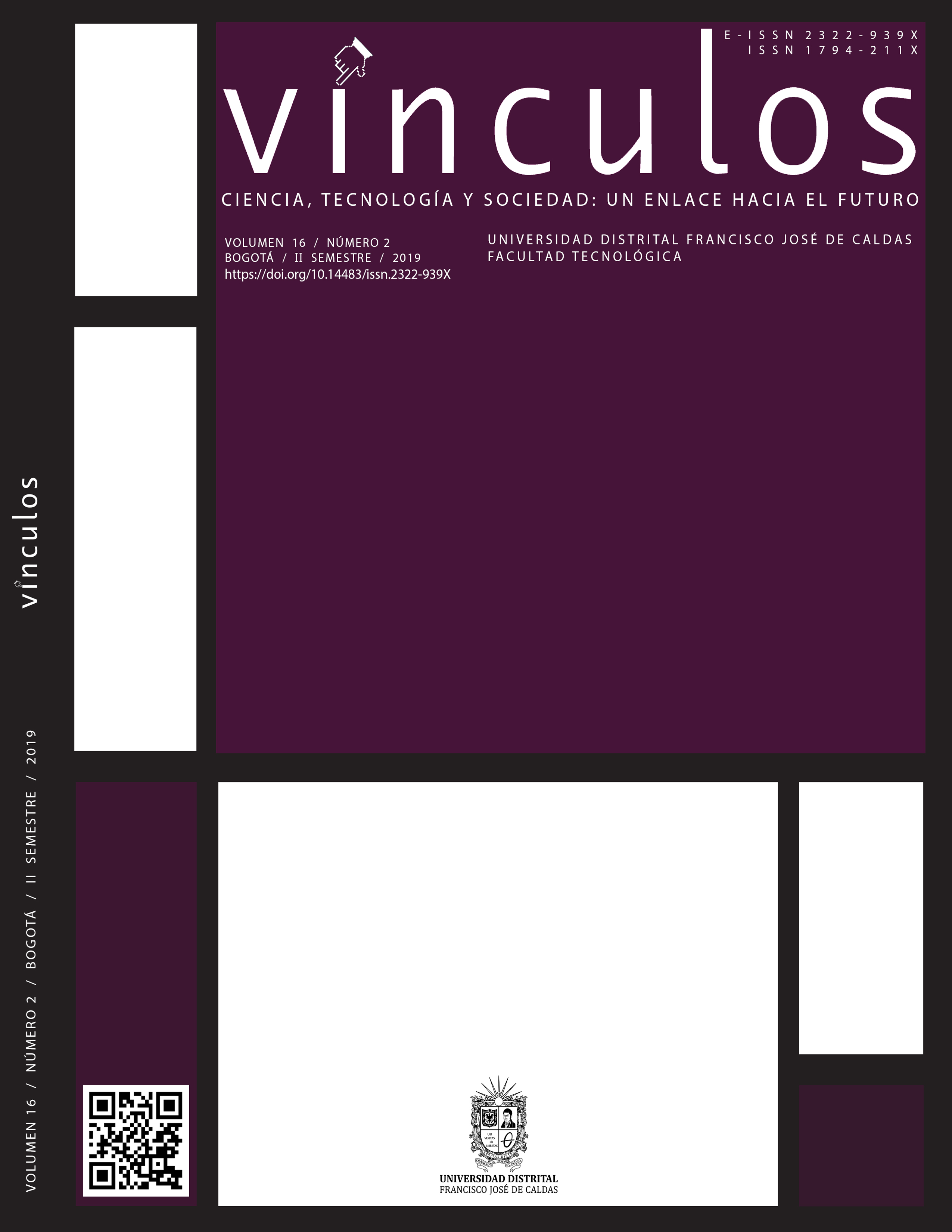DOI:
https://doi.org/10.14483/2322939X.15749Publicado:
2019-12-19Número:
Vol. 16 Núm. 2 (2019)Sección:
Actualidad TecnológicaCálculo de la elongación, dilatación y vectores de rotación de la deformación con algunas estaciones GPS en Colombia
Calculation of the elongation, dilatation and rotation vectors of the deformation with some GPS stations in Colombia
Palabras clave:
GPS, rotation rate, strain (en).Palabras clave:
GPS, índice de rotación, tensión (es).Descargas
Resumen (es)
La actividad sísmica que tiene Colombia, en especial Bogotá D.C., es alta por estar en una zona geológica muy activa. El documento es una investigación que muestra el cálculo de elongación, vectores de rotación y dilatación, combinando metodologías computacionales y ecuaciones de geología estructural; para ello, se usan las coordenadas y vectores de velocidad de las estaciones permanentes que pertenecen a la red del Sistema de Referencia Geocéntrico para las Américas. El área de estudio está delimitada por 37 estaciones permanentes ubicadas en el territorio colombiano, para calcular estas variables se usó la metodología del vecino más cercano y las ecuaciones de tensor de deformación y tensor de desplazamiento. Estas ecuaciones fueron programadas en el software Matlab debido a su destreza para trabajar en la solución de matrices, el resultado final de estos cálculos muestra que la zona de estudio se está desplazando en sentido nororiente, se deforma un máximo de , la precisión se debe al uso de datos de Sistema de Posicionamiento Global.
Resumen (en)
The following article shows the calculation of elongation, rotation vectors and dilation, combining computational methodologies and structural geology equations, using the coordinates and velocity vectors of the permanent stations that belong to the SIRGAS MAGNA-ECO network, the area of study is delimited by 37 stations of Colombia, to calculate these variables the methodology of the nearest neighbor and the equations of deformation tensor and displacement tensor were used. These equations were programmed in the Matlab software due to their ability to work in the matrix solution, the final result of these calculations shows that the study area is moving in the northeasterly direction, deforms a maximum of , the accuracy is due to the use of Global Position System data.
Referencias
[2] A. Lobo-Guerrero, “Logemin S.A”. http://www.logemin.com/eng/Download/pdf/16_Geologia_hidrogeologia_Sabana_Bogota.pdf
[3] E. Kendrick, M. Bevis, J. Smalley y B. Broock, “An integrated crustal velocity field for the central Andes”, Geochemistry, Geophysics, Geosystems, vol. 2, n.° 11, 2001. https://doi.org/10.1029/2001gc000191
[4] R. Reilinger, S. McClusky y P. Vernant, “GPS Constraints on Continental Deformation in the Africa-Arabia-Eurasia Continental Collision Zone and Implications for the Dynamics of Plate Interactions” Journal of Geophysical Research, vol. 111, n.° B5, 2006. https://doi.org/10.1029/2005jb004051
[5] Sirgas, “Sirgas”. http://www.sirgas.org/es/
[6] S. Lamb, “Vertical axis rotation in the Bolivian orocline, South America: 1. Paleomagnetic analysis of Cretaceous and Cenozoic rocks”, Journal of Geophysical Research, vol. 106, n.° B11, 2001. https://doi.org/10.1029/2001jb900012
[7] P. Zhang et al., “Continuous deformation of the Tibetan Plateau from global” Geological Society of America, vol. 32, n.° 9, pp. 809-812, 2004.
[8] J. Adam et al., “Shear localisation and strain distribution during tectonic faulting—new insights from granular-flow experiments and high-resolution optical image correlation techniques”, Journal of Structural Geology, vol. 27, n.° 2, pp. 283-301, 2005. https://doi.org/10.1016/j.jsg.2004.08.008
[9] N. Cardozo y W. Allmendinger, “Elsevier”. https://www.elsevier.com/locate/cageo


2.png)



